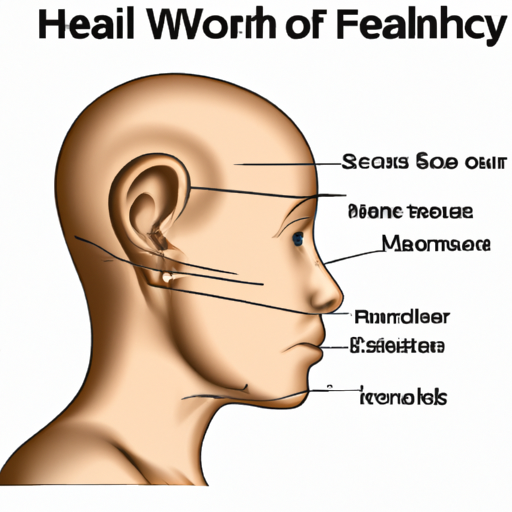The human body is an enigma. It’s a complex, fascinating entity that continually adapts and evolves throughout a person’s life. The organ systems, tissues, and cells are constantly at work, some growing and regenerating, while others remain the same size from birth. But did you know that there are certain parts of the human body that never stop growing? Fascinating, isn’t it? Let’s take a deep dive into this intriguing aspect of human biology.
1. Your Nose and Ears: The Ever-Growing Features
Contrary to popular belief, your ears and nose don’t stop growing throughout your life. This growth, however, isn’t due to cell multiplication but rather, gravity pulling down on the soft tissues and cartilage of these features. Over time, this pull causes a noticeable elongation, giving the illusion of continuous growth.
2. The Astounding Hair and Nails
While not technically a part of your body, hair and nails are another set of features that continue to grow. Hair grows about six inches per year, while nails grow around 3.47 millimeters per month. These rates can vary based on several factors, including diet, health, and age.
| Growth Rate | Hair | Nails |
|---|---|---|
| Average | 6 inches/year | 3.47 mm/month |
3. The Remarkable Brain
While the brain might seem like a static organ, it’s anything but that. Neurogenesis, or the formation of new neurons, continues throughout life, primarily in the hippocampus, which is associated with learning and memory. This means your brain is continually changing and growing, adapting to new experiences and learning.
4. The Resilient Skin
Your skin, being the largest organ in your body, is in a constant state of growth and renewal. The outer layer of the skin, or the epidermis, is continually shedding and replacing its cells. This process allows your skin to heal from injuries and adapt to changes in your environment.
5. The Mighty Muscles
Muscle growth doesn’t stop at adulthood. While the number of muscle cells remains constant, their size can change. This change is known as “hypertrophy,” and it can occur due to regular physical activity or resistance training. So, keep those workouts going!
6. The Ever-Adapting Fat Cells
Fat cells, or adipocytes, also continue to grow throughout your life. While the number of fat cells tends to stabilize in adulthood, their size can increase or decrease, depending on your diet and physical activity. This continuous change is what causes weight gain or loss.
7. The Unseen Lymphatic System
Another part of the body that continues to grow is the lymphatic system. As part of the immune system, it works tirelessly to produce new lymphocytes to help combat infections and diseases. So, while you may not see this growth, it’s certainly happening.
FAQs
-
Do all body parts grow at the same rate?
No, different body parts grow at different rates. For instance, the brain and head grow rapidly during the first few years of life, while the arms and legs grow more during adolescence. -
Why do some body parts stop growing?
Growth is regulated by a variety of factors, including hormones and genetics. Once these factors reach a certain balance, growth usually slows or stops. -
Can factors like diet or exercise affect growth?
Absolutely! Factors like diet, exercise, and overall health can greatly impact the growth and regeneration of various body parts like muscles, skin, and hair. -
Do the eyes grow?
Interestingly, the eyes are one of the few body parts that don’t grow much after birth. By the age of three, they’re already about 95% of their adult size. -
What about the bones?
Bones grow in length until puberty, after which they continue to increase in density until around the age of 30.
By understanding these aspects of human growth, you can better appreciate the complexity and wonder of your own body. Remember, it’s never too late to adopt a healthy lifestyle to aid these ever-growing body parts. After all, as a caregiver, you know the importance of health and how it contributes to overall well-being. So, promote these healthy habits and continue to marvel at the wonders of the human body.



